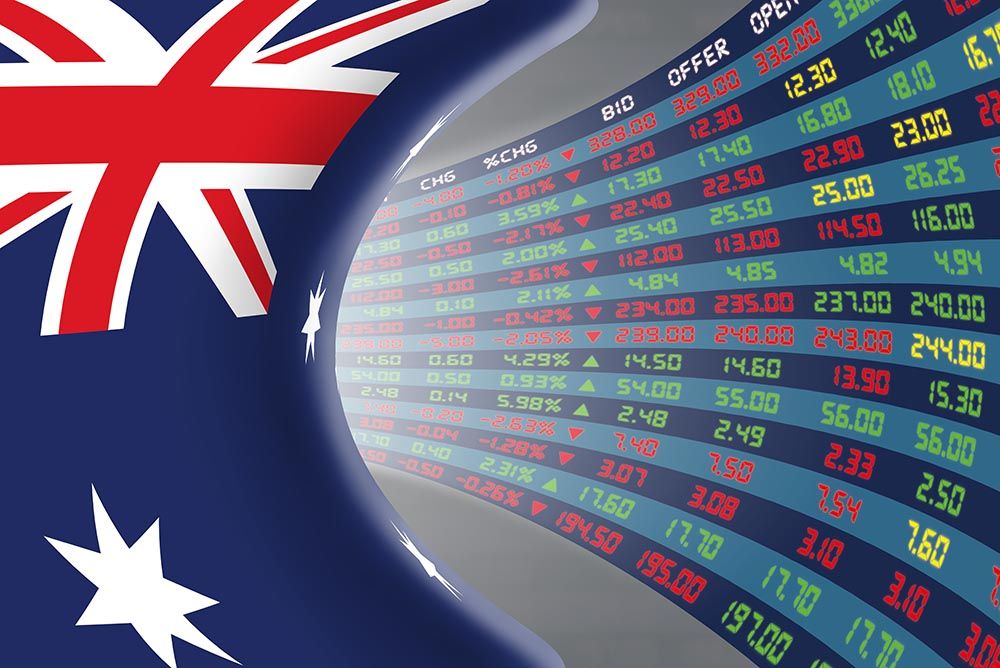Pound-Australian Dollar Rate Weeps amid Election Jitters and Antipodean Pushback on U.S. Dollar
- Written by: James Skinner
-
 Image © Adobe Images
Image © Adobe Images
-GBP suffers largest election declines Vs a rampantly strong AUD.
-GBP suffers as Labour closes the gap on Johnson’s Conservatives.
- Amid signs of high turnout, which could favour Johnson's rivals.
- Fear and uncertainty weighs on GBP/USD as AUD/USD rises.
- AUD sees second day of solid gains on bilateral rate stability.
- After Fed junks rate hike projections, tips stability, with RBA on hold.
- And amid reports of U.S.-China progress ahead of tariff deadline.
The Pound was weeping lower on Thursday and suffered its worst loss against a rampantly strong Australian Dollar that clocked up strong gains for a second consecutive session, but there could be worse to come if markets are shown to have again put too much faith in opinion polls.
Pound Sterling was in the red against all major rivals other than the safe-haven Japanese Yen Thursday as the UK began voting in a crucial general election and amid signs of high turnout on Thursday. It suffered most at the hands of Australia’s Dollar, which was boosted sharply after President Donald Trump said he’s “close to a very big deal with China” just days out from the planned implementation of tariffs on all of the latter’s remaining exports to the U.S.
Investors appeared to baulk at Thursday’s suggestions the opposition Labour Party has partially closed the polling gap between it and the governing Conservatives, and by enough to put a Boris Johnson majority in doubt.

Above: Pound-to-Australian-Dollar rate shown at hourly intervals.
“A hung Parliament or larger Conservative majority cannot be ruled out,” says Elias Haddad, a strategist at Commonwealth Bank of Australia. “GBP/USD can edge higher towards 1.3500 if the Conservatives win a majority government, regardless of the size of the majority. Remember, every Conservative candidate signed a pledge to vote for Prime Minister Boris Johnson’s Brexit deal if elected. GBP/USD would plunge closer to the 200‑day moving average (currently at 1.2698) if the risk of a hung Parliament pans out.”
An Ipsos-Morri poll published in the Evening Standard showed the Tory lead shrinking to 9 points, with as many as one-in-four voters said to still be undecided. That came hard on the heels of a Comres poll suggesting that popular support for the Conservatives is now just 5% ahead of the Labour vote.
That could be enough to make the horror-show scenario of another hung parliament a viable outcome, some election pundits say. However, there are other possibilities that would also have an impact on the Pound including one where the incumbent Prime Minister wins an even stronger majority than polls suggest, not to mention the scenario where he loses office.
“Looks like turnout is huge – unconfirmed but the indicators are that voters have turned out in big numbers - this would tend to favour the Labour and Lib Dems and SNP so we need to be very, very careful about assuming the polls have got this right – they have been very wrong before. Markets seem to be betting on a narrower Tory lead and in fact a hung parliament looks more likely than at any stage,” says Mark Wilson, chief market analyst at Markets.com.

Above: Pound-to-Dollar rate shown at hourly intervals.
Currency markets favour a Conservative victory over the increasingly radical Labour Party and the pollsters have led them to believe that's exactly what they're going to get this Thursday.
That means Sterling would be likely to suffer more than it already has if markets end up with something else. Some economists have forecast the GBP/USD rate could fall back toward its ‘no deal’ Brexit panic station at 1.20 in the event the opposition Labour Party wins a majority, from around 1.30 Thursday.
Such declines would not leave the Pound-to-Aussie rate untouched, especially if the AUD/USD rate remains on its front foot at that time.
“AUD/USD is probing the 2019 downtrend line at .6878. Further resistance can be spotted between the 200 day moving average and the October and November highs at .6911/29. Were this resistance area to be overcome, the July peak at .7077 would be back in the frame. Immediate upside pressure should be maintained while this week’s low at .6800 underpins,” says Karen Jones, head of technical analysis at Commerzbank.

Above: AUD/USD rate shown at daily intervals.
The Australian Dollar was enjoying its second day of solid gains over the greenback Thursday, and was boosted in the noon session when President Donald Trump said that he’s getting close to a deal with China that would avert the implementation of new tariffs that are scheduled to take effect on Sunday 15, December. Those tariffs would deliver a blow to the global economy and hobble the highly cyclical Australian Dollar.
Australia’s China-sensitive and commodity-backed currency has been badly hurt in the trade war so cheered Thursday's claims of progress in the talks. However, the antipodean unit had also been boosted earlier as well as overnight by the latest Federal Reserve interest rate decisions.
The Federal Reserve left its interest rate unchanged at 1.5%-to-1.75% Wednesday, in line with expectations, but dropped from its ‘dot-plot’ an earlier forecast that suggested a solitary rate hike could come at some point next year. It also gave a pretty strong hint that absent a “material reassessment” of the outlook, policymakers are unlikely to cut rates again, after already having done so on three occasions this year.
“One of the most enthusiastic moves both before and after the FOMC meeting last night was in the Aussie, which galloped higher against the US dollar on USD weakness, but also as hopes seem to be reviving that policymakers have turned the tide quickly enough to avoid a recession. Copper has pulled sharply higher to new highs for the cycle over the last few sessions, for example,” says John Hardy, chief FX strategist at Saxo Bank. “If we are headed for a relief rally in all things Aussie – this pair could have potential into 0.7200+, which would merely take it back to the 38.2% retracement of the early 2018 top.”

Above: AUD/USD rate shown at daily intervals.
December’s relatively high 1.75% U.S. interest rate is still 1% higher than the Australian cash rate, in exactly the same way it was 1% higher before either the Fed or Reserve Bank of Australia (RBA) began to cut rates this year.
And that wide differential has given investors a significant incentive to dump the Aussie and buy the safe-haven greenback each and every time the trade war between the U.S. and China flares again.
The Fed hinted strongly Wednesday that this differential is unlikely to get worse up ahead, although the Aussie was also lifted by President Trump’s claims to be nearing a large deal with China. The AUD/USD rate is now comfortably established above the 0.68 level and technical as well as fundamental analysts are tipping it for more gains ahead.
An AUD/USD rate that’s pushing higher at the same time the GBP/USD rate is not the most common of combinations in the currency market nowadays but one that is certainly noxious for the Pound-to-Australian-Dollar rate.
Time to move your money? The Global Reach Best Exchange Rate Guarantee offers you competitive rates and maximises your currency transfer. Global Reach can offer great rates, tailored transfers, and market insight to help you choose the best times for you to trade. Speaking to a currency specialist helps you to capitalise on positive market shifts and make the most of your money. Find out more here.
* Advertisement




